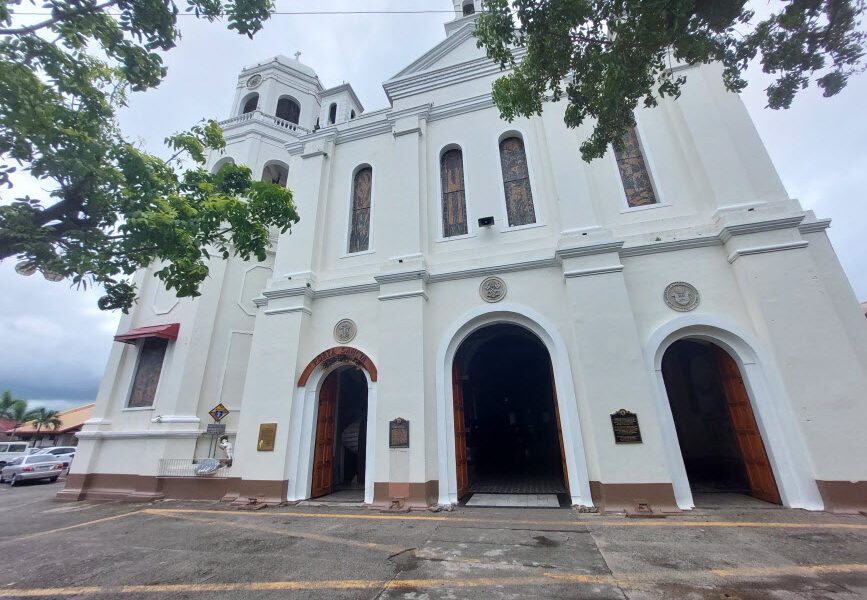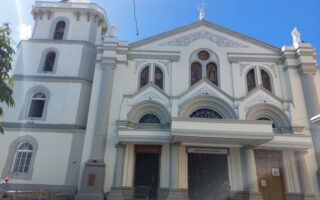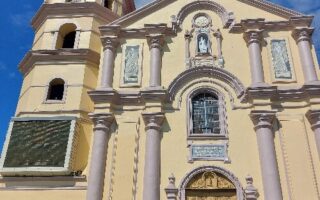Disclosure: This post may contain ad/affiliate links. If you use this link to purchase something, we may earn small commission at no additional cost to you. We appreciate your support. You may read our full disclaimer here.
Batangas is one of my favorite provinces in the Philippines. When I was just a little kid, I thought Batangas was just a small town surrounded by beautiful beaches. The company where my father worked used to have yearly family excursions to the beach, and 80% of the time it’s in the beach resorts in Batangas.
As I grew up, I learned that Batangas is one big province and that there’s more to Batangas than just stunning beaches. Batangas is also home to a lot of historical churches.
Whenever I visit a new place, I often begin my exploration with its church. Because I believe that the
history of a place often begins with its church, as religious institutions have played a central role in shaping the cultural, social, and architectural aspects of communities throughout history.
Here are a few notable old churches in Batangas:
The Metropolitan Cathedral of San Sebastian
Lipa City, Batangas
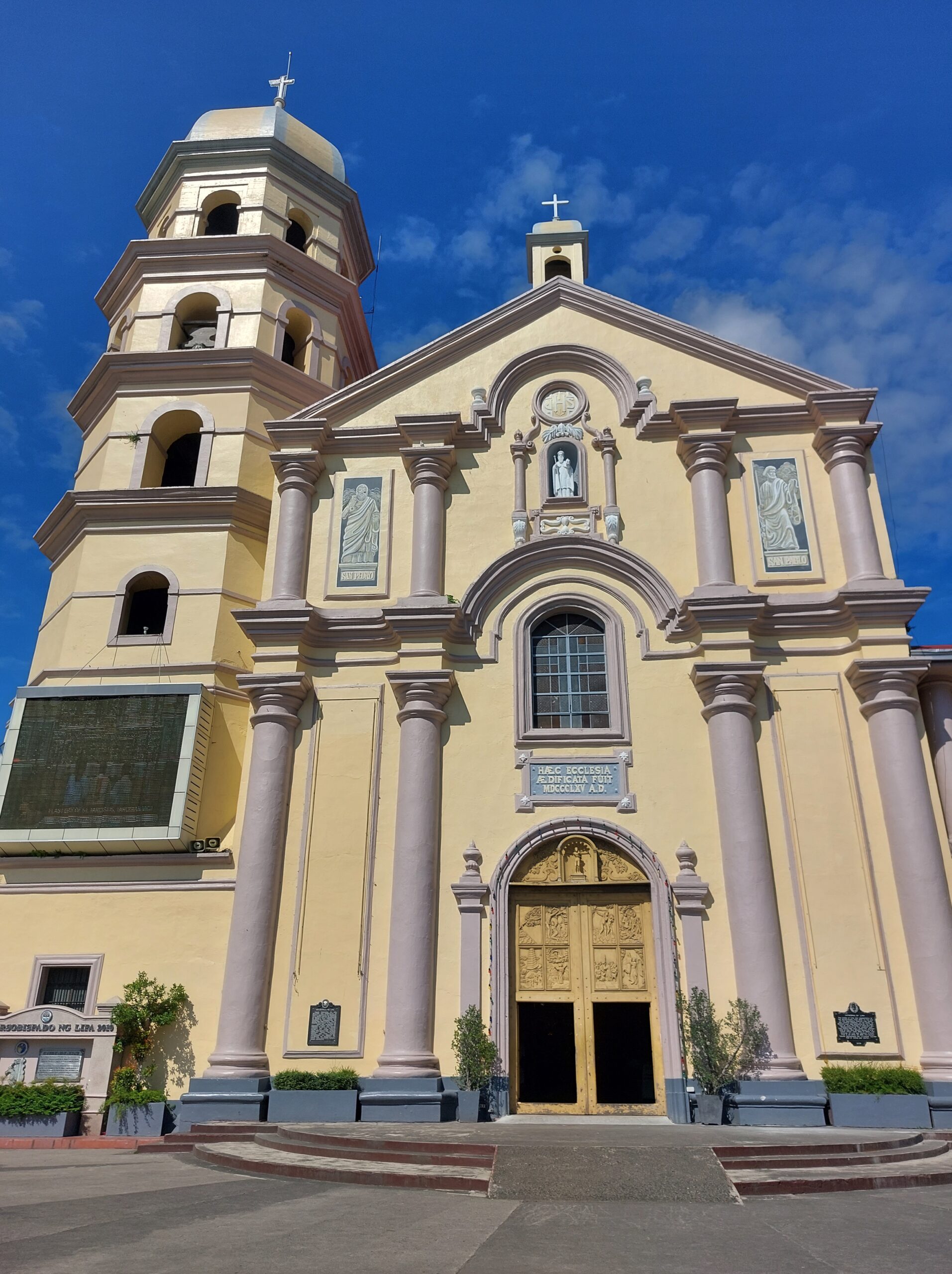
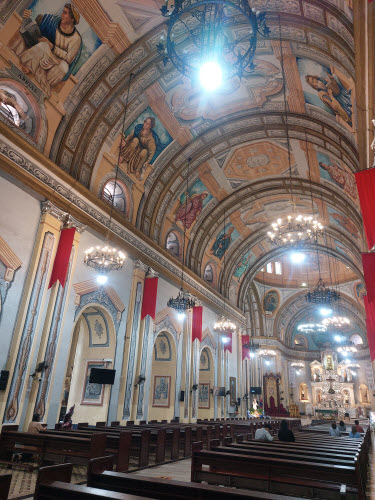
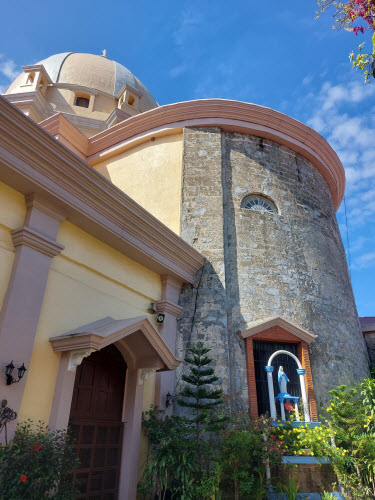
One of the oldest churches in Batangas can be found in Lipa City: The Metropolitan Cathedral of San Sebastian. This majestic church can’t be missed when you’re in the town proper of Lipa City. It is popularly known as Lipa Cathedral or San Sebastian Cathedral. This Cathedral in Lipa was built in honor of St. Sebastian.
The Metropolitan Cathedral of San Sebastian or Lipa Cathedral has been the seat of the Diocese of Lipa since its establishment on April 10, 1910. The Diocese was elevated to an Archdiocese on June 20, 1972.
The original San Sebastian church once stood along the banks of Taal Lake. It was made of woods and nipa. When Taal Volcano erupted in 1754, this church was destroyed completely.
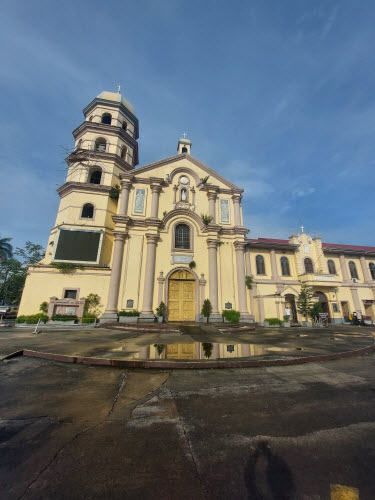
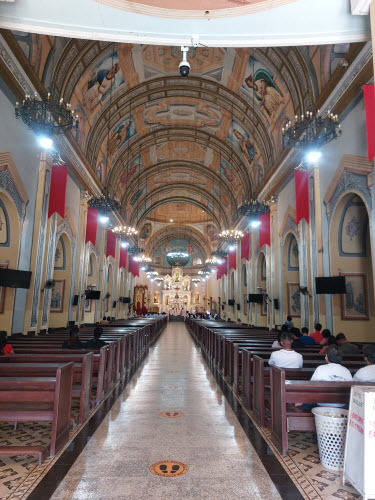
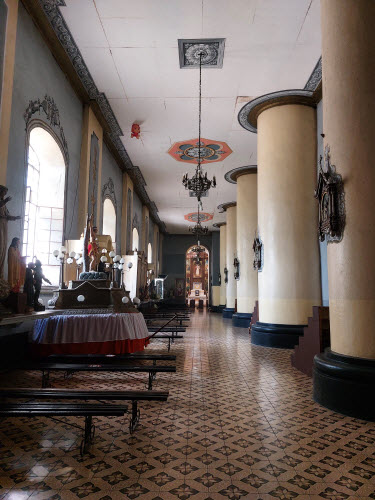
In 1790, the reconstruction of Lipa Cathedral began on its present site and was completed in 1790.
With its grand dome and stunning architectural design, San Sebastian Cathedral is a popular site for pilgrimage. This church is always included in most Lipeno’s itinerary during Visita Iglesia. Tourists from all over the Philippines are also drawn to this church because of its elegant interiors. Its breathtaking view of the high ceiling with images of saints and religious scenes is one of main attractions of the church.
January 20th is celebrated as the Feast Day of St. Sebastian.
The Most Holy Rosary Parish Church
Poblacion, Padre Garcia
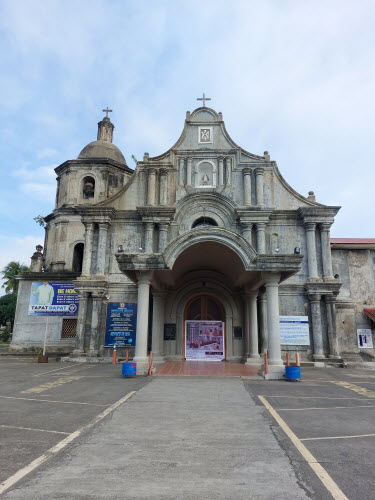

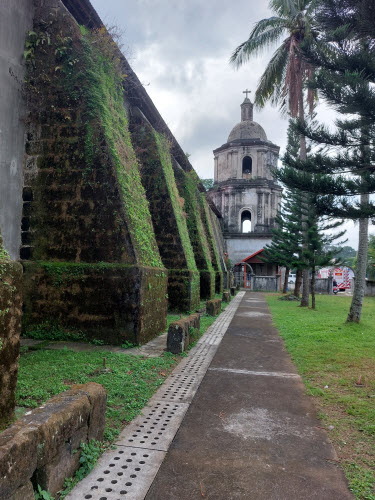
The Most Holy Rosary Parish was established in 1776. The original church building was made of native materials and later replaced with more durable one.
The first settlers were from parts of Lobo, Batangas. They were forced to move there because of the invasion of the pirates. The town was first called “Rosario” for people were praying the holy rosary while fleeing from the invaders.
The church building and the town was burned down by the revolutionist during Philippine-American war (1899-1902). The place became deserted and was called “Lumang Bayan”. The seat of its government was transferred to the new “Rosario”, Batangas. Rebuilt thereafter the church administration was transferred to the oblates of St. Joseph in 1928.
In 1945 during the liberation of the Philippines, the church was once again destroyed. Restorations were done and was finished in 1949 with the belfry of the original church was preserved.
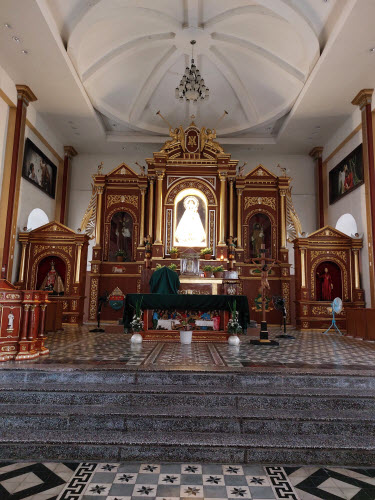

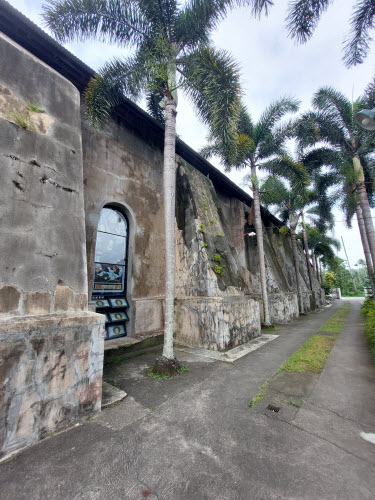
Every first Sunday of October is the feast day of The Most Holy Rosary Parish.
Padre Garcia is composed of the following Barangays: Banaba, Banay-banay, Bawi, Bucal, Castillo, Cawongan, Manggas, Maugat Balimbing, Maugat West, Pansol, Payapa, Poblacion, Quilo-quilo North, Quilo-quilo South, San Felipe, San Miguel, Tamak and Tangob.
San Juan Nepomuceno Parish
San Juan, Batangas
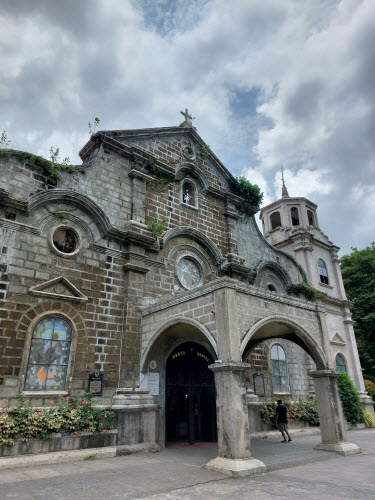
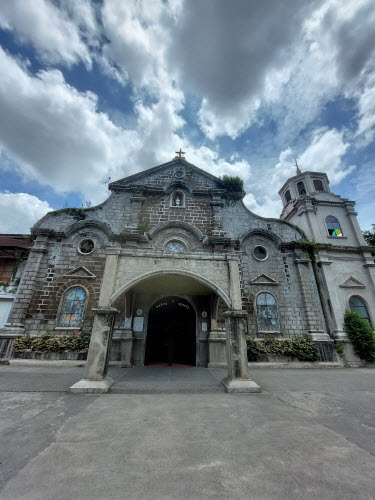
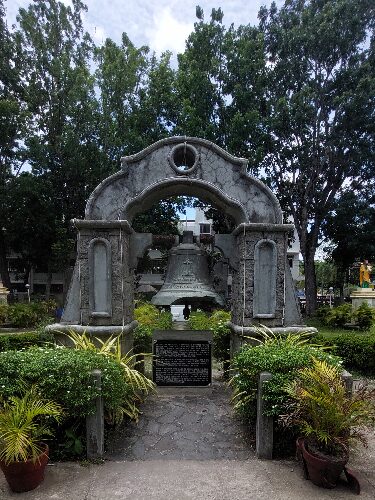
San Juan Nepomuceno Parish Church began in 1843 in the old town called Pinagbayanan, the first town of San Juan Batangas. The original church was made of palm, bamboo, and materials from coconut tree.
On August 10, 1855, through the initiative of Fr. Damaso Mojica, a church made of stones was built. However, after 28 years, this church was destroyed by flood. In 1894, the church was transferred to its present site and was formally inaugurated that same year with Father Celestino Yodi as its Parish Priest. A bell tower was attached to the church building between 1928 and 1935.
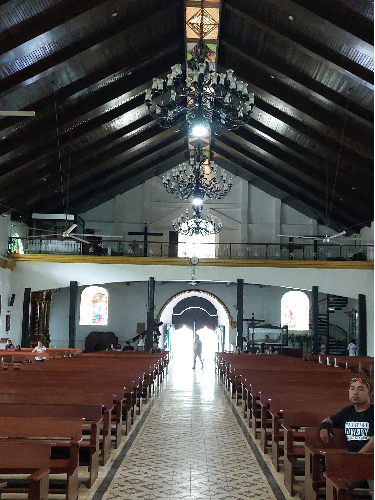
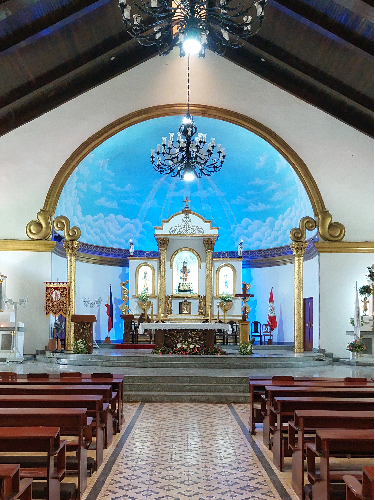
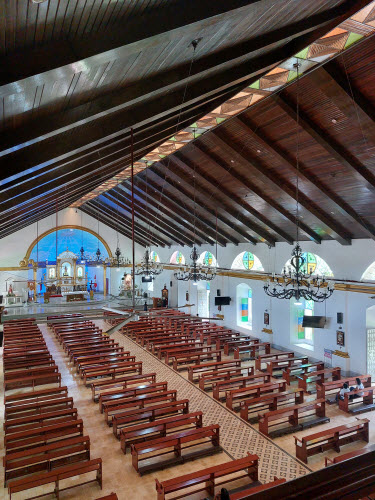
San Juan Nepomuceno Parish Church has undergone different repairs and regular maintenance throughout the years and in 1995 the major renovation of the church took place.
The Spanish-era design and architecture of the façade San Juan Nepomuceno Church was preserved. But the interior of the church was restored with a more durable structure.
San Juan Nepomuceno Parish celebrates its feast day every 16th of May.
St. James the Greater Parish
Ibaan, Batangas
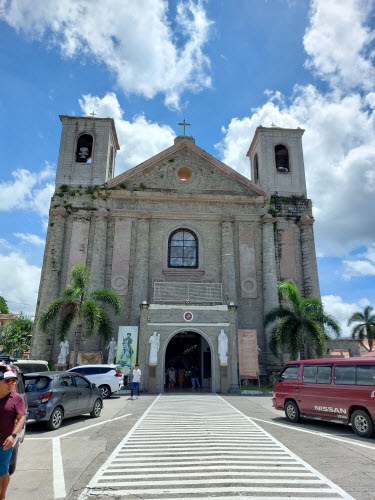
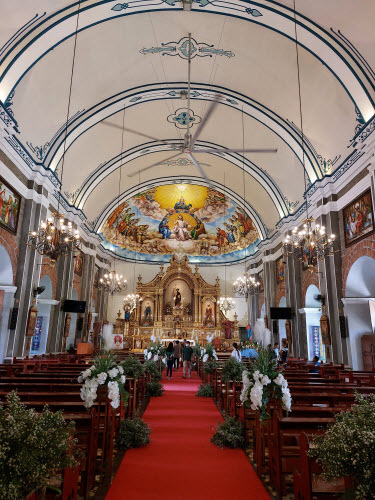
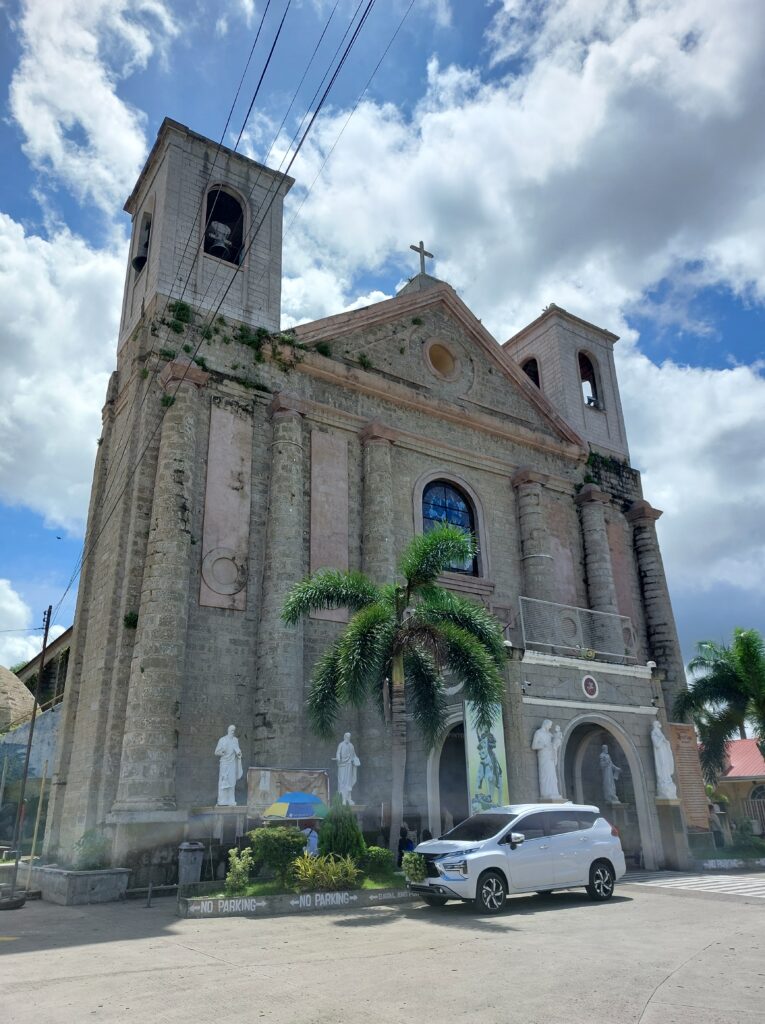
Ibaan used to be a Barrio that is part of the then-town of Batangas, now Batangas City. It was later separated from Batangas and was established on February 11, 1832.
St. James the Greater Parish was founded in 1832 by Father Manuel Grijaldo and was placed under the patronage of Saint James the Apostle.
In 1854, lead by Father Manuel Gonzales, the church was constructed and completed by Father Bruno Laredo in 1869. The earthquake on May 29, 1880, damaged the church and under Father Francisco Alvarez the repair was done from 1891 to 1896.
St. James the Greater Parish is known for Easter tradition of Bati (greeting) and Dagit (to hook or to catch) that signifies the return of the Risen Christ.
The Feast of Saint James the Greater is held every 25th of July.
Minor Basilica of Immaculate Conception
Batangas City
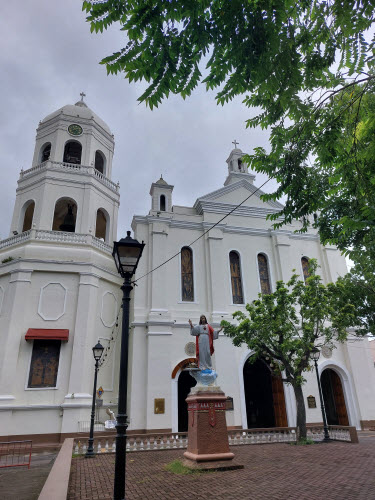
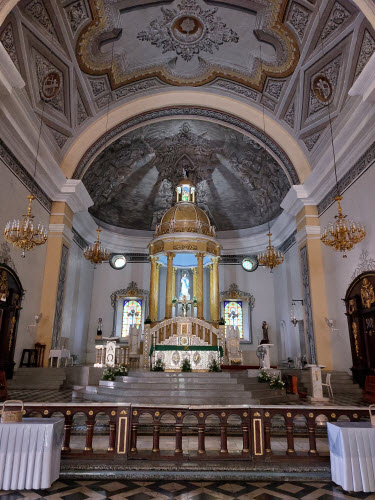

One of the oldest churches in Batangas and has a history that spans over 400 years is The Parish of the Immaculate Conception in Batangas City. It started as a wooden church back in 1578 with the construction lead by Father Diego de Mojica. The parish was formally established in 1614 and was dedicated to the Immaculate Conception. After a year, the church was ruined by the fire.
In 1686, the foundation of the new stone church started under Father Jose Rodriquez. The main hall was finished during the same year.
In 1693, an unusual convent was built one fitted with artillery meant to drive away pirates and other invaders.
In 1706 the transept made of reef stone was completed.
In 1720 the construction continued.
In 1721 the church was blessed and re-dedicated to the Immaculate Conception
In 1740’s the church was ruined once again by fire after it was struck by lightning.
In 1756 the repairs were completed.
As time went by, and the congregation of the church grew larger, the church became too small for them. In 1850 under Father Pedro Cuesta, the old church was demolished to make way for a bigger and better church building. A strong fence was also added to enclose the church and convent.
In 1863 there was an earthquake that damaged the church and so walls and protections were added to the church.
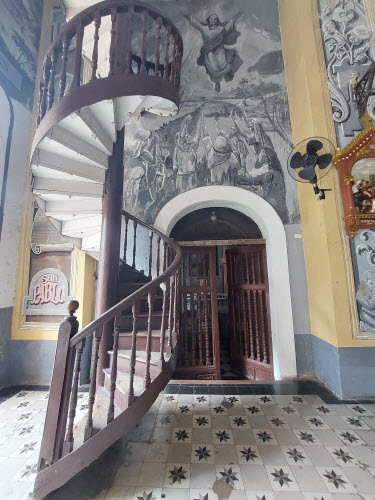
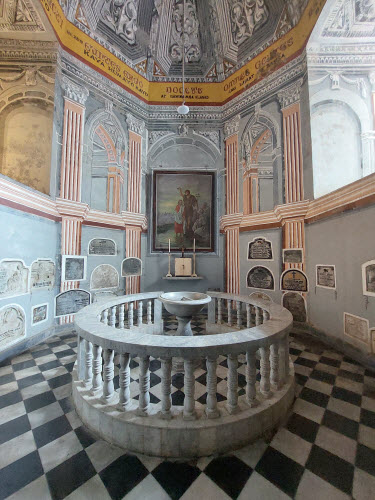
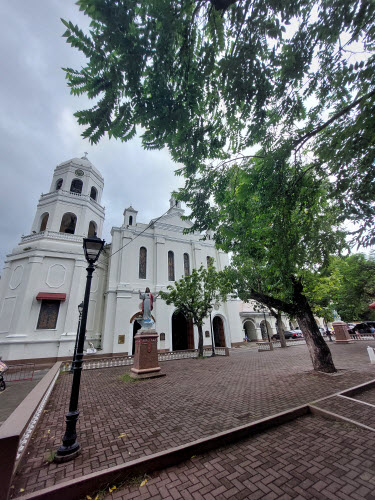
On February 13, 1948, Pope Pius XII gave the church its Minor Basilica status.
In 1942, the façade of the church collapsed due to an earthquake and the reconstruction was done. Improvements and maintenance were done to the church over the years.
In 1934, a second and third level to the belfry was added to the church.
On October 12, 2012, 18 new carillon bells were installed to signify a new era of renewed evangelization.
On April 8, 2017, the Minor Basilica had to be closed when it suffered heavy damage yet again due to series of earthquakes that struck Batangas. It took 8 months to finish the restoration of the church. And on December 2, 2017, the church reopened its doors to its congregations, just a few days before the Feast of the Immaculate Conception on December 8.
Archdiocesan Shrine & Parish of St Joseph the Patriarch
San Jose, Batangas
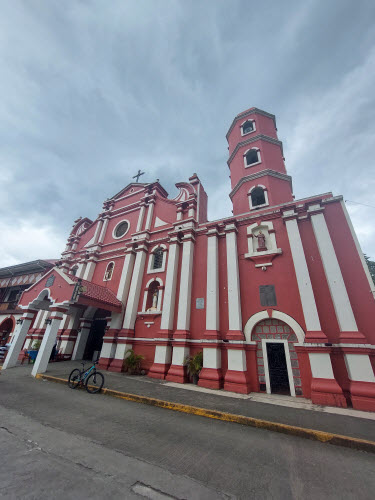
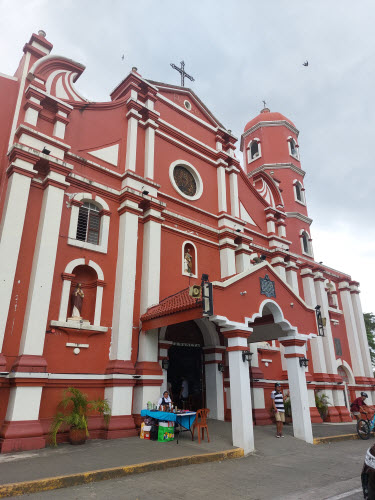
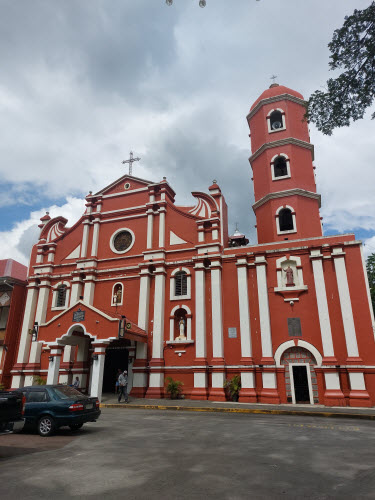
The Archdiocesan Shrine & Parish of Saint Joseph the Patriarch is also known as Saint Joseph the Patriarch Church. It is one of the oldest churches in Batangas located in the heart of the town of San Jose, Batangas.
It’s been more than 250 years since the church was founded.
The foundation of this town known formerly as Malaquing Tubig, dates from 1765. The church was built by the famous Botanist the Rev. Manuel Blanco, O.S.A. in 1812. The stone bridge over Malaquing Tubig was constructed by the Rev. Bruno Laredo, O.S.A.
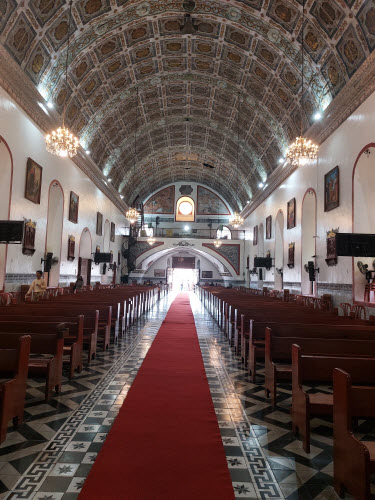
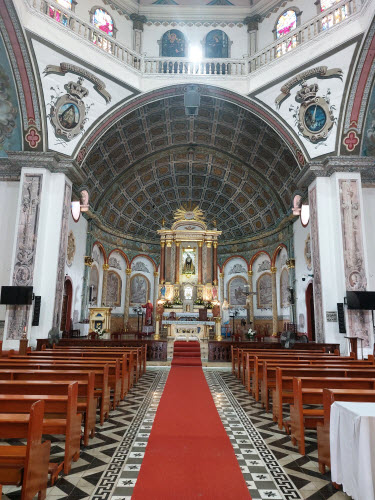
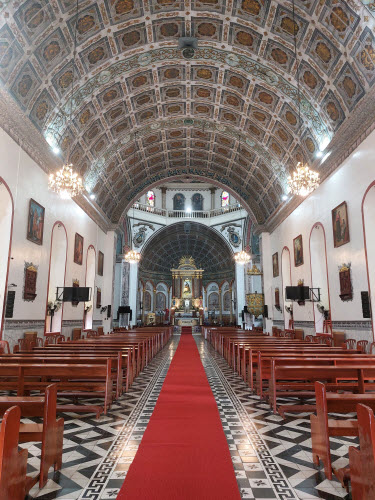
Saint Joseph the Patriarch Church architectural design has a Baroque and neo-classic facade and a single-aisle interior, which offers an unobstructed view of the stunning main altar. The magnificent altar has six rounded columns encircling the image of St. Joseph. Outside, a multi-tiered belfry stands which was built in the latter part of the 19th century.
The Archdiocesan Shrine & Parish of Saint Joseph the Patriarch celebrates the feast day of its patron every 19th of March.
Basilica de San Martin de Tours in Taal
Taal, Batangas
The Basilica of St. Martin de Tours or simply Taal Basilica is considered the largest Catholic Church in Asia.
The first church was originally built in present-day San Nicholas, Batangas in 1575 under Augustinian supervision with Saint Martin De Tour as their patron saint.
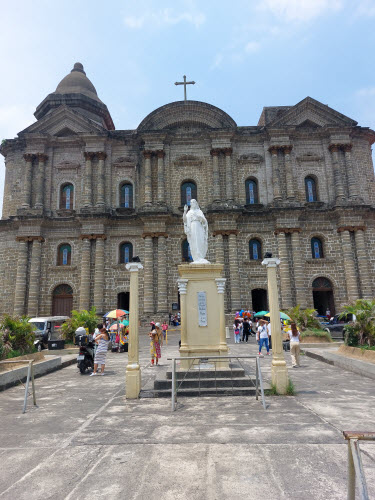
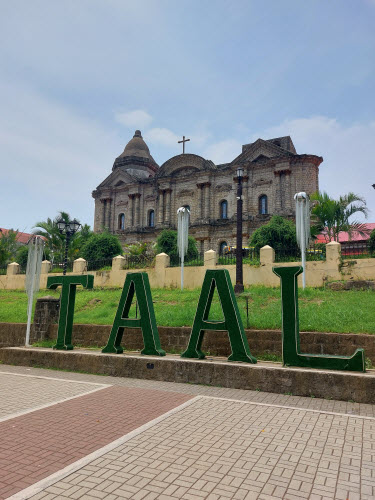
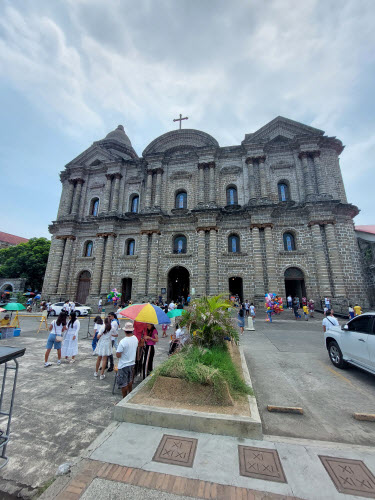
The church had gone through several reconstructions and relocations throughout the years. It was made into a Basilica on December 8, 1954, and was declared as a national shrine on January 16, 1974.
Taal Basilica is 96 meters long, 45 meters wide, and 96 meters tall. This colossal Baroque structure was made of coral stones and adobe. The most noticeable features of its façade were the 24 classical columns in pairs and lined up two rows of six on top of the other. It has 10 windows and 5 doors. The edifice is topped with a triangular roof and gable on each side and one in the center. On the left side rises the bell tower.
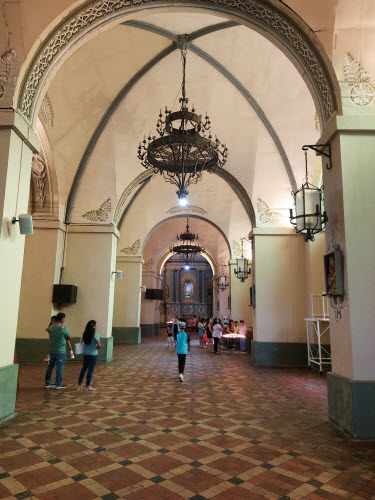
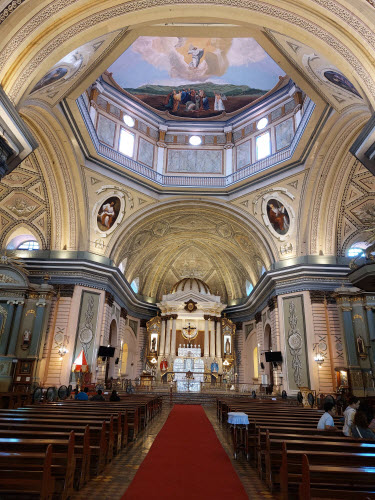
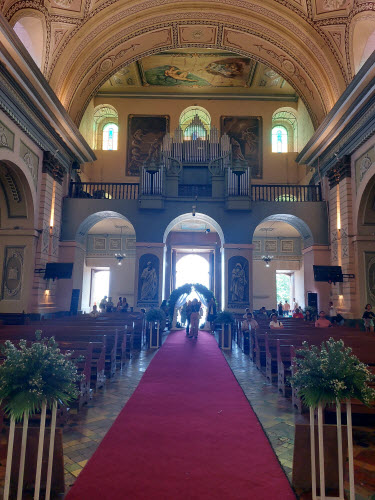
The Basilica of St. Martin de Tours celebrates its feast day on November 11.
By exploring the history of a place through its church, one can uncover layers of information that go beyond religious practices, providing a comprehensive understanding of the community’s past, its people, and the forces that have shaped its identity over time.
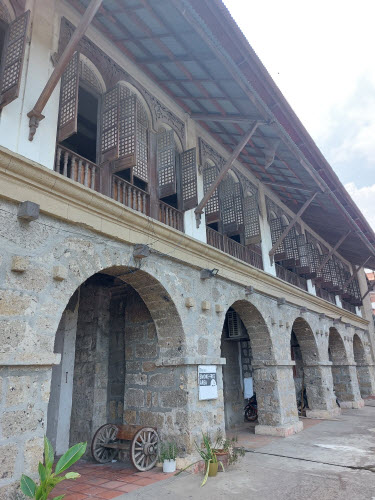
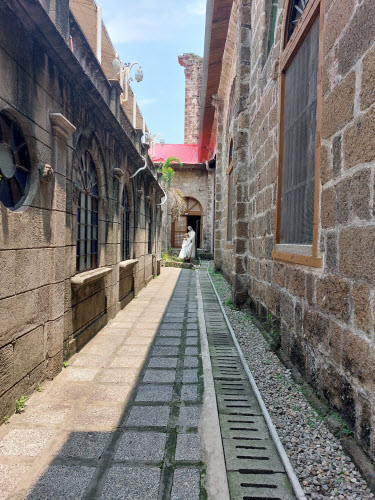
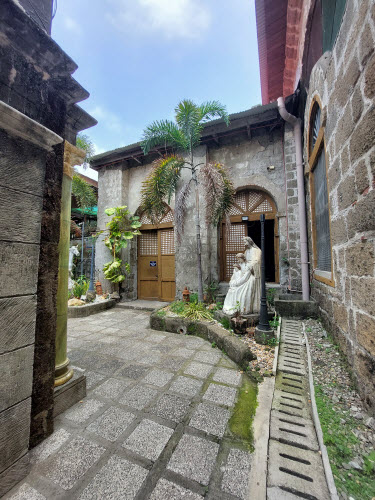
Many old churches have withstood the test of time and survived natural disasters, wars, and other challenges. The resilience of a church building can be a testament to the community’s endurance and determination to preserve its heritage.
These old churches in Batangas are a must visit site during Semana Santa for Visita Iglesia. And even if it is not Holy Week, visiting these old beautiful churches and exploring their stories will leave you in awe.
